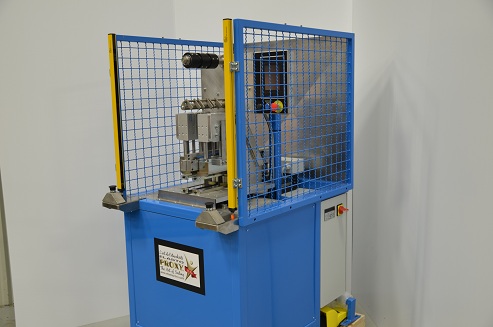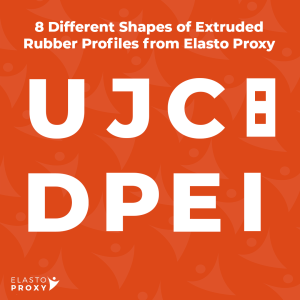
Doug Sharpe
President of Elasto Proxy
Did you know that there are many different ways to splice rubber seals and gaskets? Examples include film splicing, cold bonding, C-press injection molding, and vulcanizing. Each method has its advantages, but selecting the splicing technique that’s right for your sealing application depends upon factors such as run quantity, environmental conditions, material type, and tooling costs.
For example, film splicing is a reliable, high-quality process for bonding and sealing profile gaskets without inserts. Unlike other joining methods, it creates strong bonds and does not require adhesives. With their fast cycle times, film splices are often used for higher-cycle applications. They create strong corners that won’t crack, and are suitable for taped profiles. Examples include door seals and automotive gaskets.
Film Splicing Then
Ten years ago, Elasto Proxy acquired a state-of-the-art film splicer. Yet there were still issues that our technical team had to overcome. With taped profiles, for example, we had to find a way to cool the part of the clamping mold where the tape is located. The reciprocating water cooler that we chose worked well, but film-splice setups were still complex. The cooling jacket also added to tooling costs, making cold bonding a more attractive splicing option for some applications.
Used mainly for low-volume splicing, cold bonding applies a quick-setting adhesive to the edges of rubber profiles that are cut with our water jet machine. Cold bonding is precise, but it’s also time-intensive. Naturally, any manual process is also subject to inconsistencies. Other splicing techniques, such as C-press molding, are more expensive. Vulcanizing is cost-effective, but generally recommended for splicing very low quantities of sponge or solid profiles that lack an internal cavity.
Film Splicing Now
Recently, Elasto Proxy introduced a newly-acquired film splicer that solves old challenges and offers exciting new possibilities. Instead of heating the clamping molds, our splicing press uses infrared (ID) light to heat the entire surface. This whole-surface heating uses less energy, produces strong bonds, and supports precise alignments while avoiding PSA or film liner degradation. Unlike cold bonding, IR splicing also eliminates time-consuming, manual efforts that can result in discrepancies.
Elasto Proxy’s infrared splicer also increases our press clamping range. Because the molds are three times wider, our custom fabrication specialists can make 3 to 4 splices at a time instead of 1 or 2, significantly increasing productivity rates. With a traditional press, heating and holding down such large, complex shapes was a more challenging task. Today, using our newly-acquired IR film splicer, Elasto Proxy can bond polyethyelene film to EPDM rubber in the flash of a light bulb.
Ask our solutions providers about film splicing applications for water control and impact resistance. Examples include rubber gate seals and impact bumpers. With Elasto Proxy’s infrared film splicer, you have an alternative to molded parts – which can be expensive. IR film splicing also offers a degree of durability that some large splices lack. Just ask the engineer who’s braced a big spice in place, only to have the part break during transportation.
How Can We Help You?
For 25 years, Elasto Proxy has been solving sealing challenges in a wide variety of industries. By listening to your needs and analyzing all of your requirements, we can recommend the right splicing and taping techniques for your applications. How can we help you?
Please contact us for more information, or join the conversation on our social media channels. Look for a post with a link to this blog entry on LinkedIn, Facebook, Google+, and Twitter. Elasto Proxy has a YouTube channel, too. Finally, please subscribe to our free e-newsletters. They’re a great source of information delivered right to your email inbox, and they provide links to blog entries like this one.









